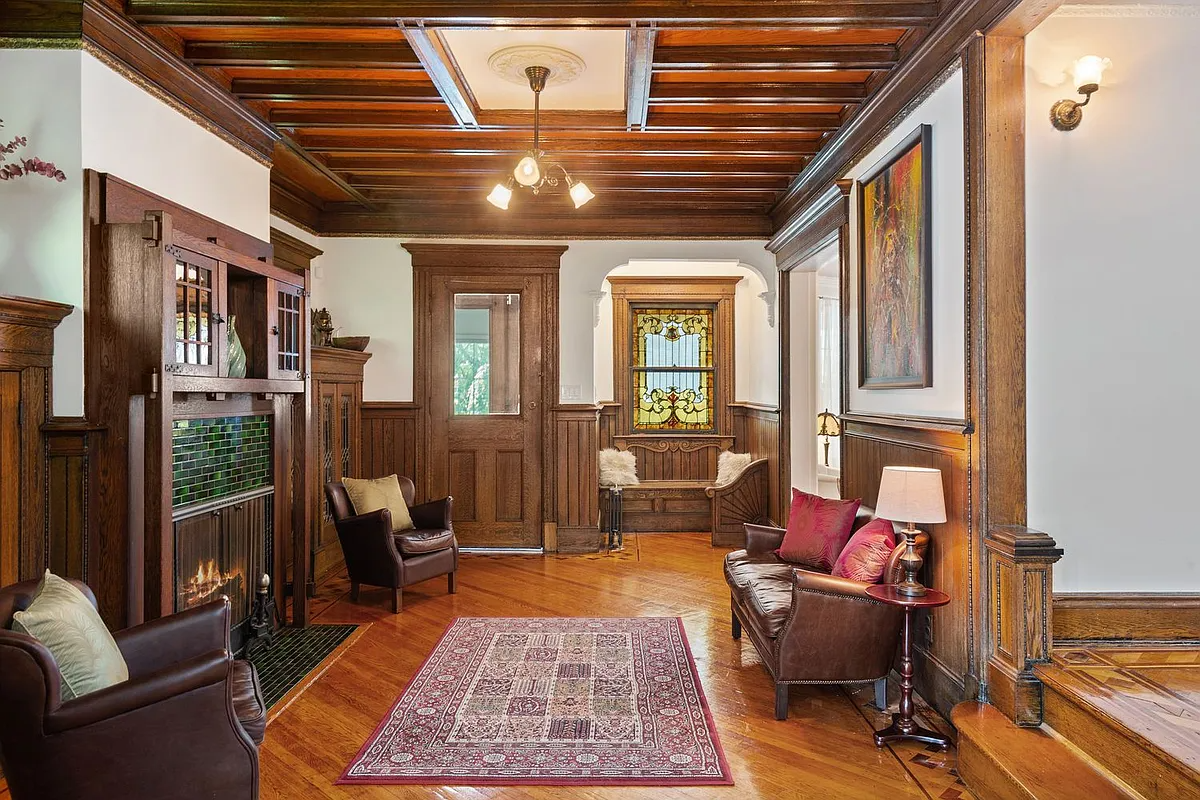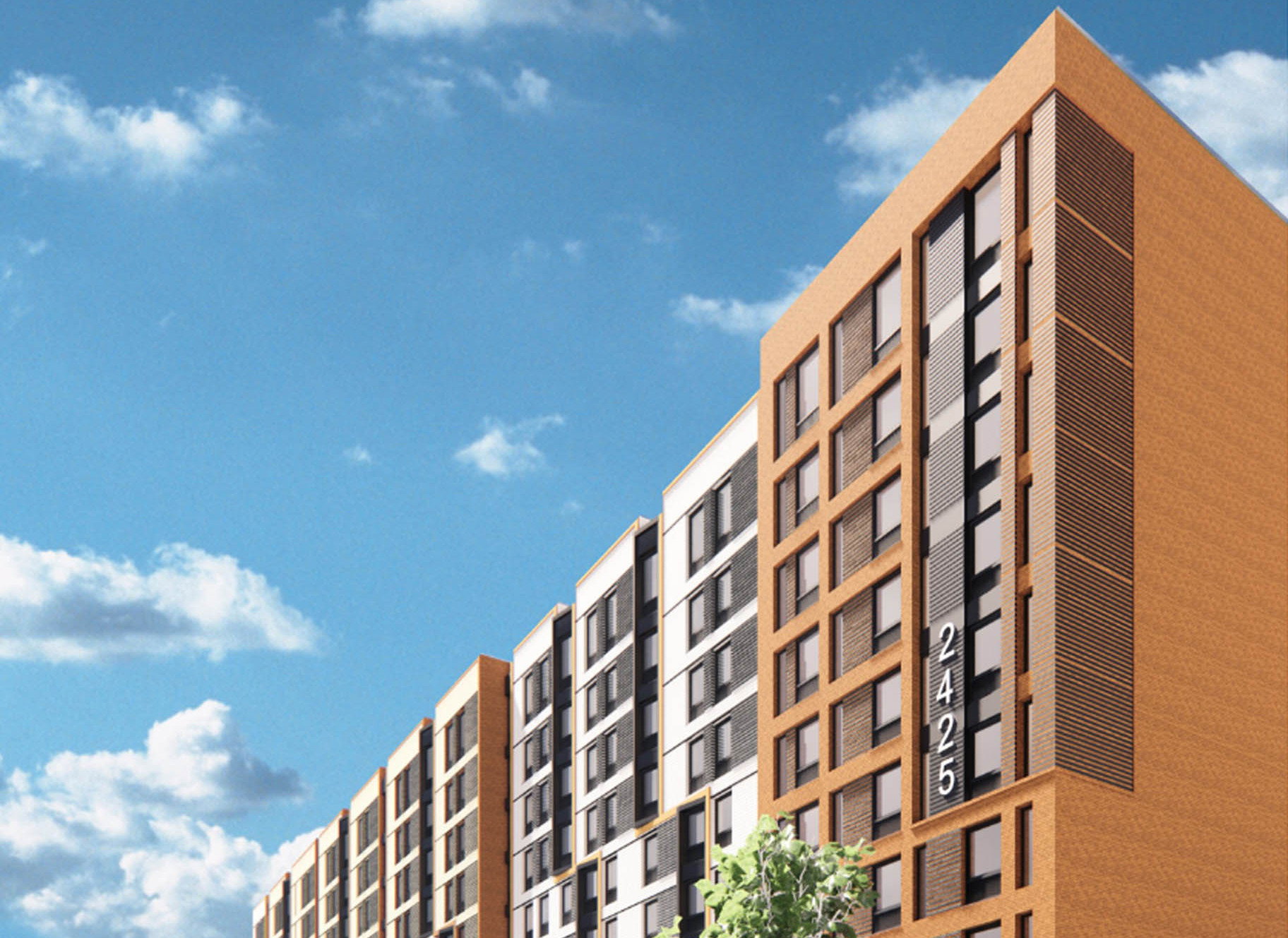LPC Calendars Two Brooklyn Buildings
Two Brooklyn buildings are set for a public hearing at Landmarks on March 22nd. The first is 2307 Beverly Road, the Sears Roebuck building in Ditmas Park Flatbush. According to this Forgotten NY article, the “huge Art Moderne monolith” was built in 1932 and was the first Sears retailer in NYC. Back in 2007, FNY…


Two Brooklyn buildings are set for a public hearing at Landmarks on March 22nd. The first is 2307 Beverly Road, the Sears Roebuck building in Ditmas Park Flatbush. According to this Forgotten NY article, the “huge Art Moderne monolith” was built in 1932 and was the first Sears retailer in NYC. Back in 2007, FNY wrote, “Sadly, it appears that Sears is only doing the bare minimum amount of maintenance to the store. I’m guessing that its days are numbered.” Hopefully not anymore! The other is the Public National Bank of New York Building at 47 Graham Avenue. According to the LPC, it was built in 1921-23 and designed by Eugene Schoen. “Designed in the form of a one-story temple, and clad in terra cotta or cast stone (now painted), it features rusticated columns and corner piers on both principal facades that frame rectangular and round-arched fenestration. Panels and entrance surrounds display a combination of classical and Secessionist ornament.”
Photos by Forgotten NY and Emilio Guerra





benson- the cost of living in NYC was always high- landmarking is not a major contributing factor. There are plenty of reasons why industry and manufacturing have moved out, but landmarking is not the reason.
Crown heights is one of the largest landmark districts, Bed-Stuy will be another. There are many others ever further out and I know we hardly have the best access to subways here. Stops are very spread out. I’m not sure why it matters if they are close to the city core or not- you certainly can’t say nothing nwe is being built in NYC because of landmarking.
The other point is that except for certain public buildings, the LPC will not declare a neighborhood landmarked unless the people living there advocate for it and apply for landmark status with the LPC. Then they undergo a rigorous review process. On top of that the LPC asks for a consensus from the community. It takes years. So basically landmarking is a grass roots movement in many neighborhoods. And as CHN and Bed-Stuy prove, it isn’t a matter of white gentrification either. It comes from long-time residents as well.
To add to what Scott just said: the issue is not how many NYC folks want to live in the other places cited. The issue is relevancy. NYC used to have a much broader economic base than it does now. It was the largest industrial city in the US, its largest shipping port, its largest center for printing and a major engineering center. All of those sectors have moved away, and one of the top reasons is the high cost of housing, and excessive landmarking contributes to this problem.
“Nobody I know living in NYC would want to live in those places.”
But plenty of people leave NYC for other areas due to high housing prices driven by low availability. Many more people who want to move here cannot.
The population of the United States will continue to grow, and as long as the population of NYC is growing at a slower pace it will continue to become less and less relevant.
You can go to the NYC GIS site http://gis.nyc.gov/doitt/nycitymap/ and look at both subway lines and historic districts on an interactive map (you have to zoom in 2 levels first).
The landmark historic districts are largely in areas served by subways and convenient to the Manhattan core business districts.
I have serious doubts about the role that landmarked neighborhoods have played in stabilizing neighborhoods from an economic standpoint.
Neighborhoods of all types have seen improvements, including places like Williamsburg where in a large area there is only about 1 block covered by a historic district.
In addition, there has not been a wholesale demotion of older buildings in non-landmark areas of Brooklyn.
I support protecting buildings that are truly significant landmarks, as well as a sampling of typical housing stock from different time periods and designs.
However, I feel that LPC has gone beyond this by several orders of magnitude, and is now primarily an agent of those who oppose change and growth.
“By bxgrl on March 14, 2011 1:48 PM
Would that someone were responsible for the external aesthetics of all the new crap that’s going up all over the city these days.”
The people who own the property are responsible, which is as it should be. When government bureaucracies are in charge of aesthetics, youre likely to end up with East Berlin or, if you’re really lucky, some of the less objectionable urban renewal projects.
Neither the private nor the public sector has a monopoly on bad taste, so I’d prefer to leave it up to the person footing the bill for the development.
“The more NYC lives in the past, the less relevant it becomes when compared to places like Houston, Dallas, and Atlanta.”
Number one, nobody I know living in NYC would want to live in those places. And secondly, those cities happen to deeply regret their loss of historic buildings and do all they can to promote and capitalize on the remaining historic structures and neighborhoods. I went to college in Georgia and it was hilarious how Atlanta always made excuses for the historic buildings, many dating pre-civil-war, they bulldozed in the name of progress — they try to claim it was all Sherman’s doing. Not so. The city did it themselves decades after the civil war. But they’re too embarrassed to admit it.
The stats I presented were for the whole city
But NYC doesn’t live in the past and overall the LPC has stabilized neighborhoods, propped up property values and kept beautiful, distinctive neighborhoods desirable places to live. You say that those buildings are disproportionately in city centers and close to public transportation- is this anecdotal or do you have real stats on this? Just curious.
All across the country, historic neighborhoods have been part of the renaissance of cities- the historic neighborhoods in Brooklyn have certainly contributed greatly to the Brooklyn Renaissance.